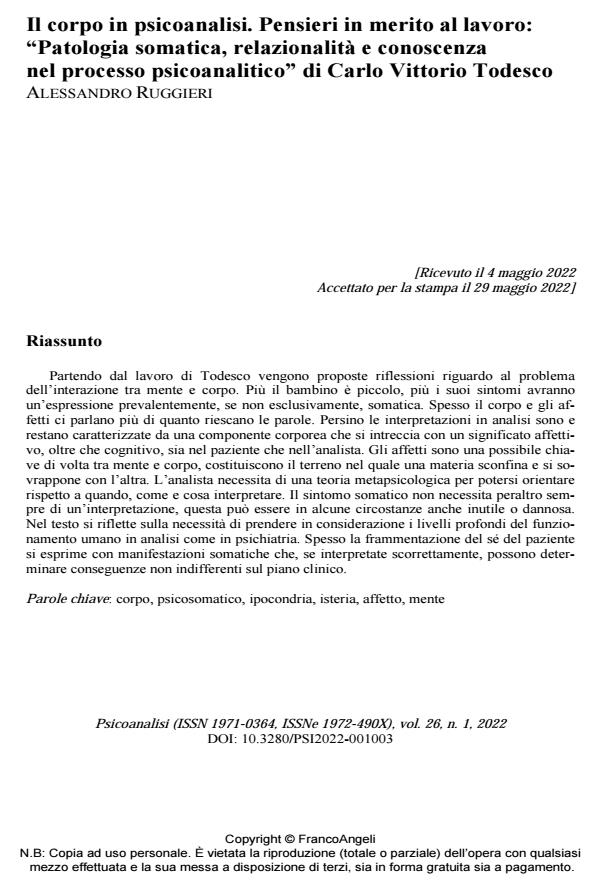The Body in Psychoanalysis. Thoughts about: "Somatic Pathology, Re-lationship and Knowledge within the Analytic Process" by Carlo Vittorio Todesco
Journal title PSICOANALISI
Author/s Alessandro Ruggieri
Publishing Year 2022 Issue 2022/1
Language Italian Pages 11 P. 27-37 File size 162 KB
DOI 10.3280/PSI2022-001003
DOI is like a bar code for intellectual property: to have more infomation
click here
Below, you can see the article first page
If you want to buy this article in PDF format, you can do it, following the instructions to buy download credits

FrancoAngeli is member of Publishers International Linking Association, Inc (PILA), a not-for-profit association which run the CrossRef service enabling links to and from online scholarly content.
Starting from Todesco’s work, reflections are proposed about the problem of the interaction between mind and body. The younger the child, the more his symptoms will have a pre-dominantly, if not exclusively, bodily expression. The body and the affects often speak to us more clearly than words can do. Even the interpretations in analysis are and remain character-ized by a bodily component that is intertwined with an affective, as well as cognitive, meaning in both the patient and the analyst. Affects are a possible keystone between mind and body, they constitute the area in which one matter crosses over and overlaps with the other. The analyst needs a metapsychological theory in order to be able to imagine when, how and what is to be interpreted. The somatic symptom, however, does not always require an interpretation, that can be even useless or harmful in some circumstances. The author reflects on the need to con-sider the deep levels of human functioning in analysis as well as in psychiatry. The fragmenta-tion of the patient’s self is often expressed by somatic manifestations which, if interpreted incorrectly, can determine significative consequences on a clinical level.
Keywords: Body, psychosomatic, hypochondria, hysteria, affection, mind
Alessandro Ruggieri, Il corpo in psicoanalisi. Pensieri in merito al lavoro: "Patologia somatica, relazionalità e conoscenza nel processo psicoanalitico" di Carlo Vittorio Todesco in "PSICOANALISI" 1/2022, pp 27-37, DOI: 10.3280/PSI2022-001003